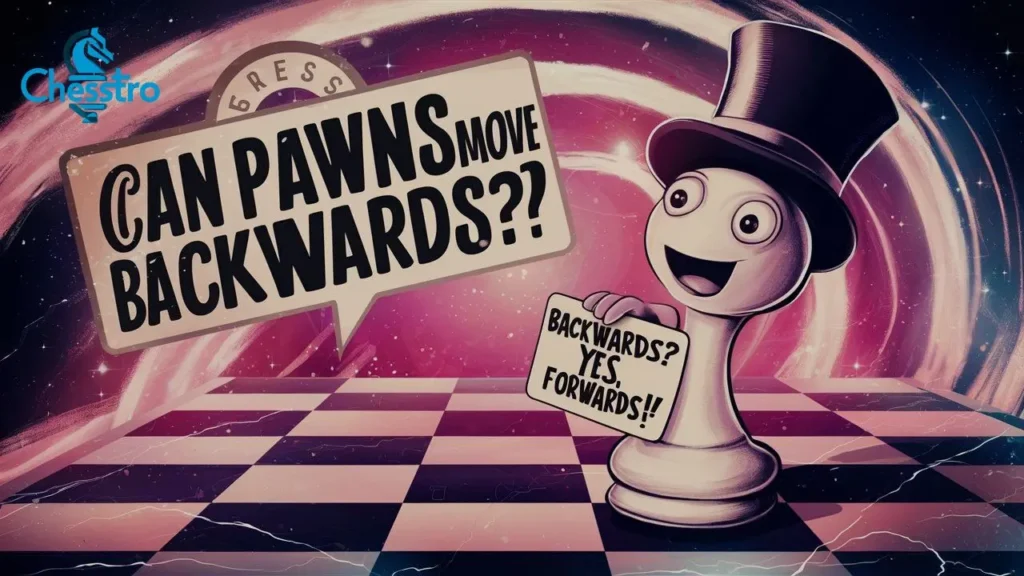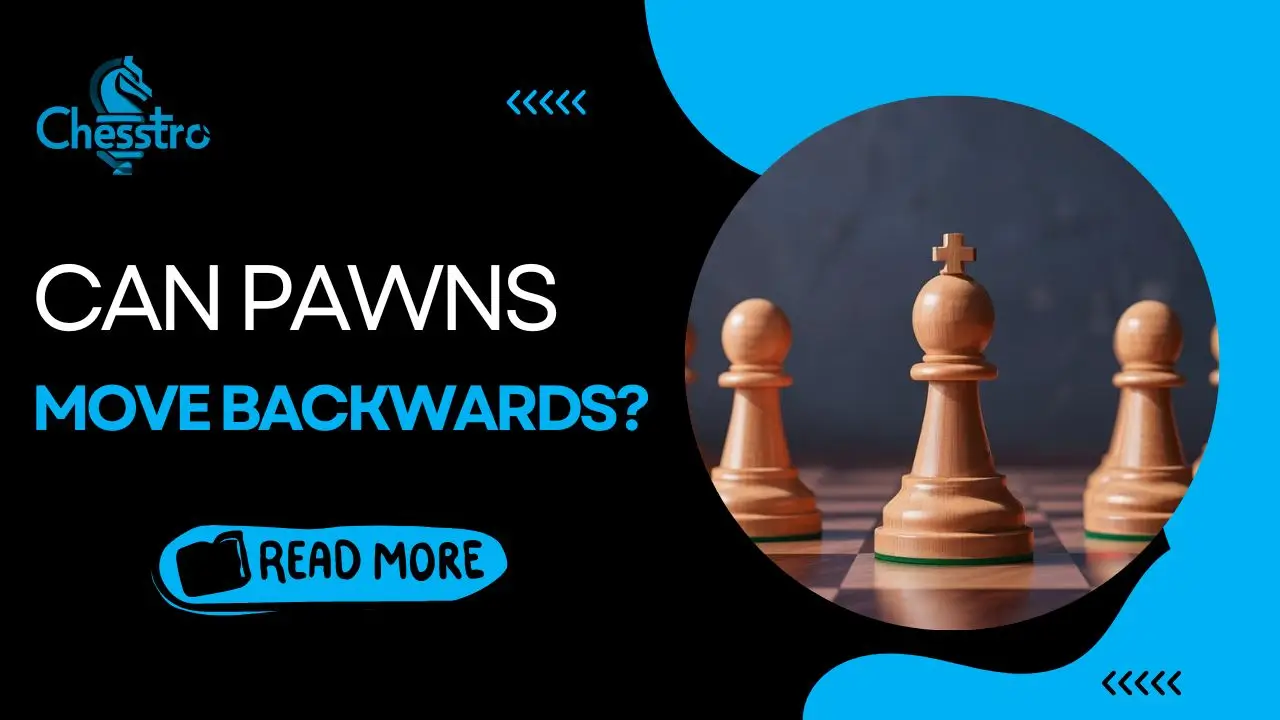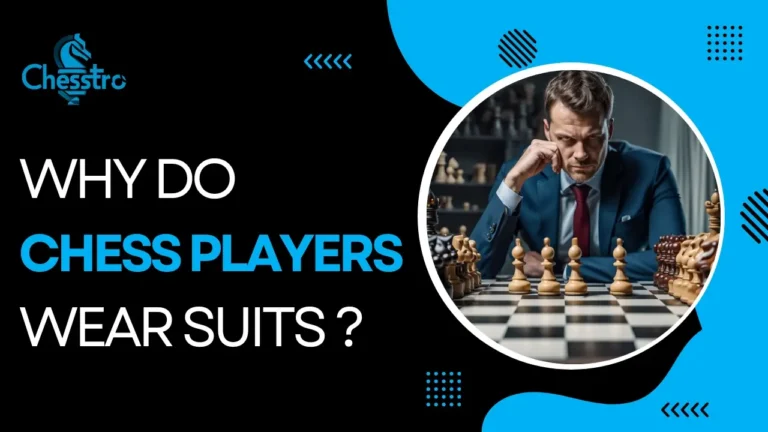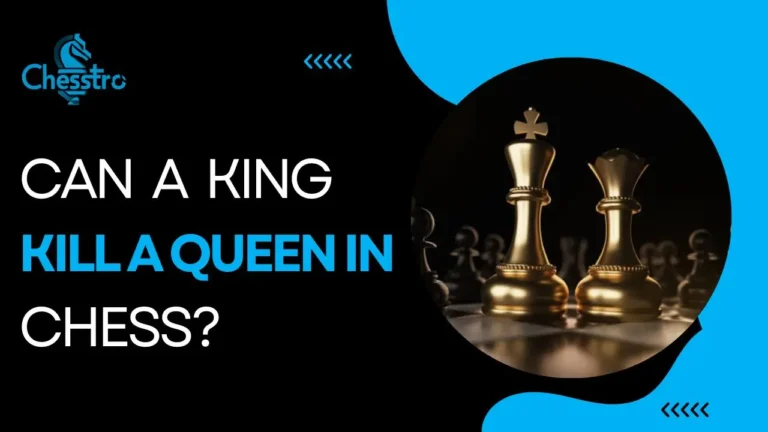Can Pawns Move Backwards? Chess Rules Unveiled 2024
Can Pawns Move Backwards? Pawns are the most numerous and humble pieces on the chessboard. Their movements are unique and restricted, which adds to the strategic complexity of the game. A question that often arises in chess is whether pawns can move backward.
For your Information!
The pawn, the most numerous piece in a game of chess, wasn’t always able to move two squares forward. This rule was implemented during the 15th century in Spain, revolutionizing the game’s dynamics.
This article explores the rules that govern pawn movement in chess and uncovers the reasons why pawns cannot move backward. We will also delve into the consequences of moving a pawn backward and answer some frequently asked questions related to pawn movement.
So, if you’re curious to know more about the intricacies of pawn movement in chess, keep reading.
You can also learn more about Can You Castle If Rook Is Under Attack?
| Topic | Explanation |
|---|---|
| Can Pawns Move Backwards? | This article delves into the unique movement restrictions of pawns in chess, exploring the reasons behind their inability to move backward and its strategic implications. |
| Can A Pawn Attack Backward? | Pawns in chess games can’t attack backward; they can only move forward and capture diagonally in a forward direction, contributing to strategic planning and board control. |
| Why Can’t Pawns Move Backwards? | Pawns’ inability to move backward originates from the historical context of chess, encouraging bold and strategic gameplay while emphasizing their role in defense and offense. |
| Consequences of a Pawn Moving Backward | Moving backward violates chess’s fundamental principles, weakens defense, and hinders strategic development, potentially providing advantages to the opponent. |
| Is It Possible For Pawns To Make Backward Moves During Gameplay? | Pawns typically cannot make backward moves; however, they can execute backward captures under exceptional circumstances, contributing to tactical complexity. |
Can A Pawn Attack Backward?
Pawns in regular chess games cannot attack backward. They are unique pieces with limited movement options, only able to move forward and capture diagonally in a forward direction.
When charging, pawns can only take an opponent’s piece if it is on a diagonal square in front of them. This means pawns can capture fragments to the left and right of them, but only in the direction they are moving towards.

Pawns cannot attack or capture pieces behind them or in a backward direction. Their inability to shoot backward is one reason why strategically placing and protecting pawns throughout the game is crucial to ensure their safe advancement and effective control of the board.
You can also learn more about Where are the chess hustlers
Pawns are essential to chess because they can transform into more powerful pieces if they successfully reach the opponent’s back rank. However, their limited attacking capabilities add a level of strategic planning to the game.
Why Can’t Pawns Move Backwards?
“The pawns are the most numerous and humble pieces on the chessboard.” Pawns possess a unique set of movements and restrictions. While they have the potential to transform into more powerful figures, they are unable to retreat once they have advanced.
This intriguing characteristic adds to the strategic complexity of the game. The primary reason pawns cannot move backward lies in the historical context of chess.

In the beginning, pawns were like foot soldiers who couldn’t move back. This shows the bravery needed in a fight. This rule also means that pawns are like walls protecting more important pieces like knights and bishops while also making room for them to move forward.
You can also learn more about What is the 20-40-40 rule in Chess?
Chess encourages a lively and bold way of playing by making players move their pawns ahead. This pushes them to take over the board and plan smart moves. So, the rule that pawns can’t move backward helps keep the old feeling of chess. It shows chess’s strategy side and why it’s loved as a game of clever battles.
What Are The Consequences of a Pawn Moves Backward In Chess?
The pawn is the most unique and versatile piece on the board in chess. Its movement pattern is typically limited to one step forward, but it holds specific consequences if it decides to move backward.
Unlike other pieces, a pawn moving backward is not a legal move according to the standard rules of chess. If a pawn retreats, it violates the game’s fundamental principles and undermines its intended strategic purpose.

Chess thrives on the notion of advancement, control, and territorial gain. By moving backward, a pawn relinquishes its power, leaves gaps in its defense, and gives up its potential to occupy crucial defensive or attacking positions.
You can also learn more about Why is Blitz chess so popular?
Moving backward can also leave other pieces vulnerable to capture and can ultimately hinder the overall development of a player’s game plan.
Consequently, making such a move may provide an advantage to the opponent by enabling them to seize control and exploit the backward pawn’s weakened position.
Therefore, pawns should carefully consider their options and strive to move forward to maintain their tactical value in chess.
You can also learn more about Can You Use Two Hands in Chess?
Is It Possible For Pawns To Make Backward Moves During Gameplay?
In chess, pawns have a unique set of rules that govern their movement. By default, pawns can only move one square at a time onward, except for their first move, when they can advance two squares.
Therefore, the concept of making backward moves contradicts the traditional rules of pawn movement. However, under certain exceptional circumstances, pawns can cause what is known as backward captures.
In such cases, a pawn can capture an opposing piece diagonally behind it, effectively taking a backward step and eliminating the opponent’s piece. This back capture is an exception to the general rule and can rarely be carried out during gameplay.
You can also learn more about Do Chess Books Help?
Furthermore, it is essential to note that this backward move applies not to all pawns but to specific situations involving opposing pieces occupying the diagonal squares behind them.
FAQS: Can Pawns Move Backwards?
Final Thoughts: Can Pawns Move Backwards?
In conclusion, pawns are unique and essential pieces in the game of chess. While they cannot move backward, they have the potential to transform into more potent pieces if they reach the opponent’s back rank.
The inability of pawns to move backward adds a level of strategic complexity to the game and encourages bold and active play. Therefore, careful planning and strategic placement of pawns are crucial to ensure their safe advancement and effective control of the board.







